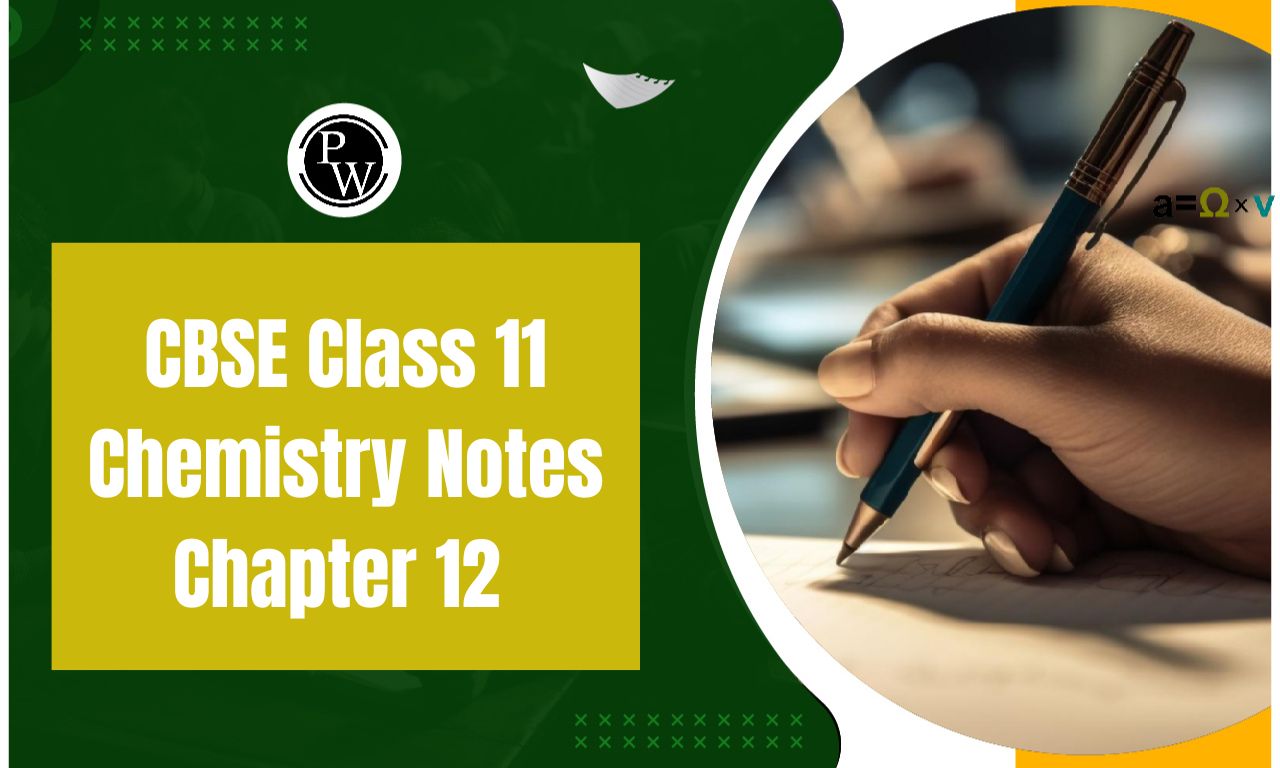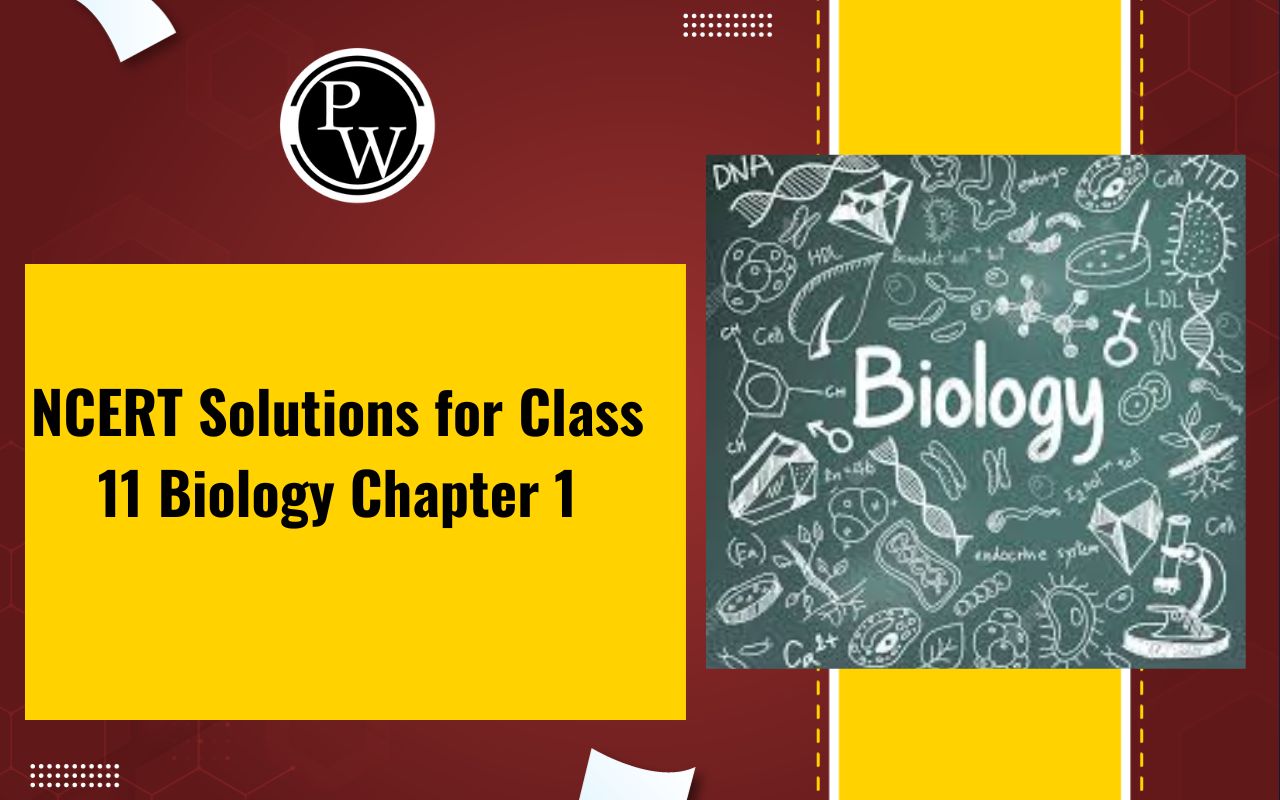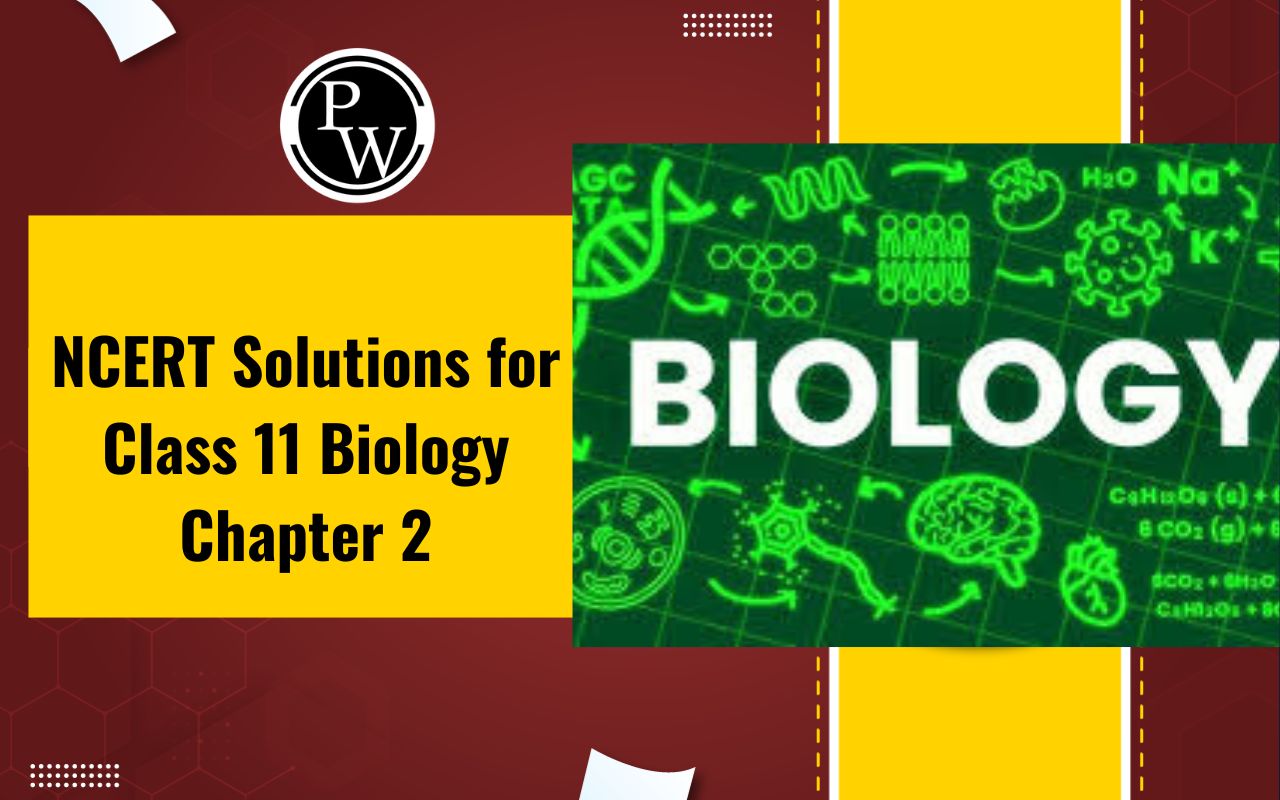
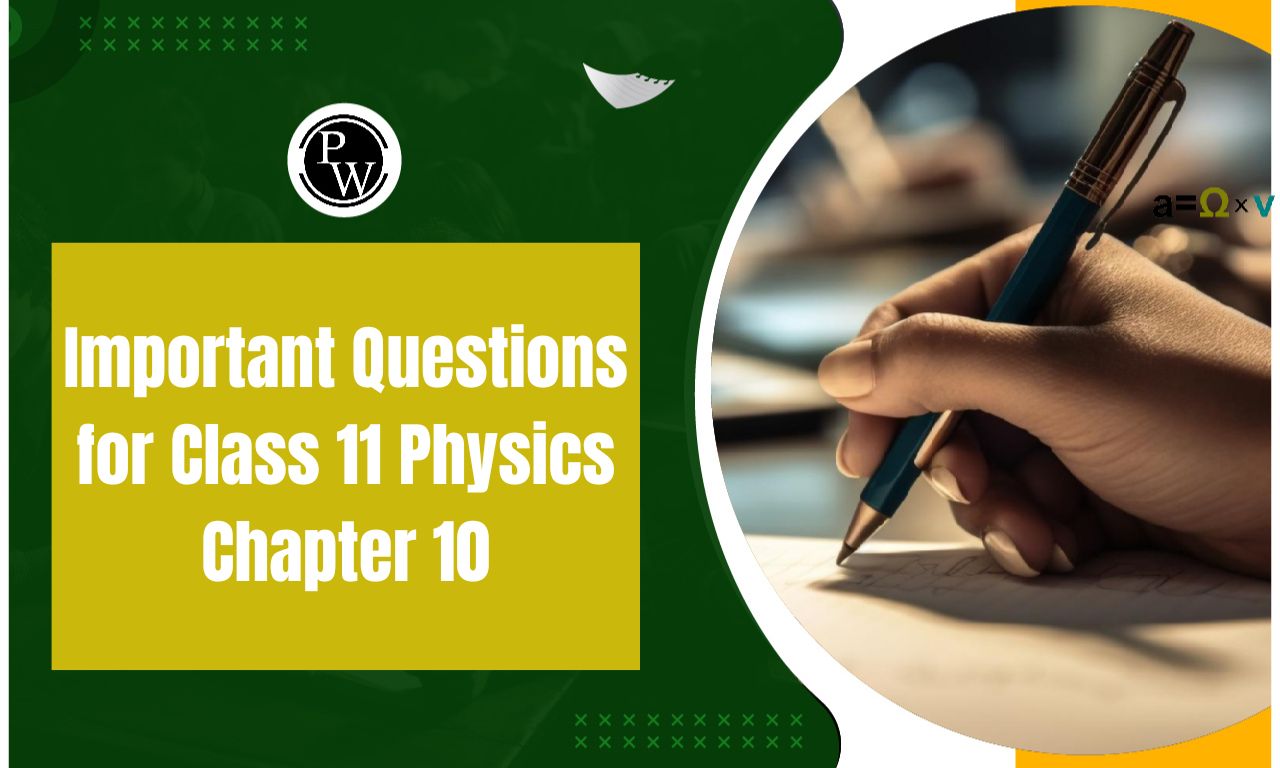
Important Questions for Class 11 Physics Chapter 10: Chapter 10 of Class 11 Physics, Thermal Properties of Matter , deals with the concepts of heat, temperature, and the behavior of matter under thermal conditions. Key topics include the laws of thermodynamics, specific heat capacity, and calorimetry. The chapter explores how heat affects different substances, the concept of latent heat, and the mechanisms of heat transfer (conduction, convection, and radiation).
Important Questions for Class 11 Physics Chapter 10 Overview
Chapter 10, "Thermal Properties of Matter," in Class 11 Physics covers essential concepts like temperature, heat, specific heat, thermal expansion, and the laws of thermodynamics. Important questions from this chapter typically focus on calculating heat transfer, understanding specific heat capacities, and applying concepts of thermal expansion in practical scenarios. Mastery of these topics is crucial as they lay the foundation for advanced studies in thermodynamics and material science. These concepts also have real-world applications in engineering, climate science, and everyday technology, making this chapter fundamental for both academic progress and practical understanding of the physical world.Important Questions for Class 11 Physics Chapter 10 PDF
In Class 11 Physics, Chapter 10 Thermal Properties of Matter, students explore key concepts like heat, temperature, specific heat capacity, and the laws of thermodynamics. This chapter is essential for understanding the behavior of materials at different temperatures and their energy transfer. Below, we have provided a PDF containing important questions from this chapter to help you strengthen your preparation and grasp these crucial topics.Important Questions for Class 11 Physics Chapter 10 PDF
Important Questions for Class 11 Physics Chapter 10 Thermal Properties of Matter
Below is the Important Questions for Class 11 Physics Chapter 10 Thermal Properties of Matter -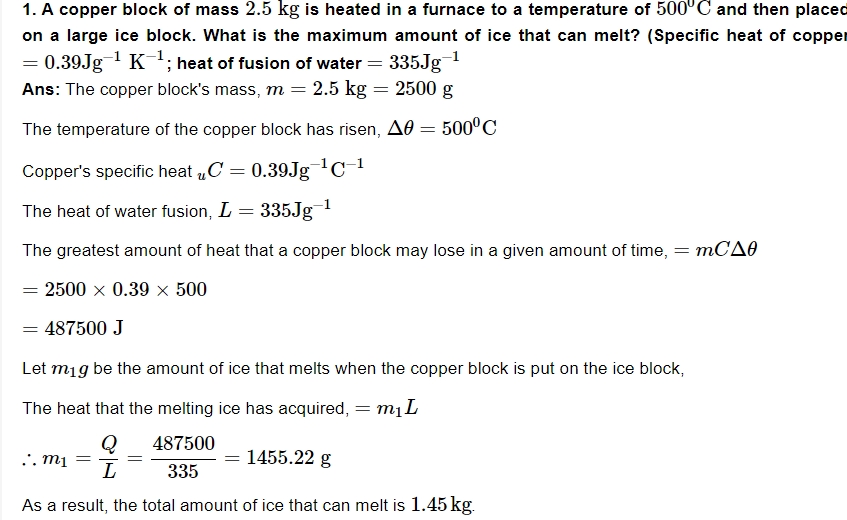
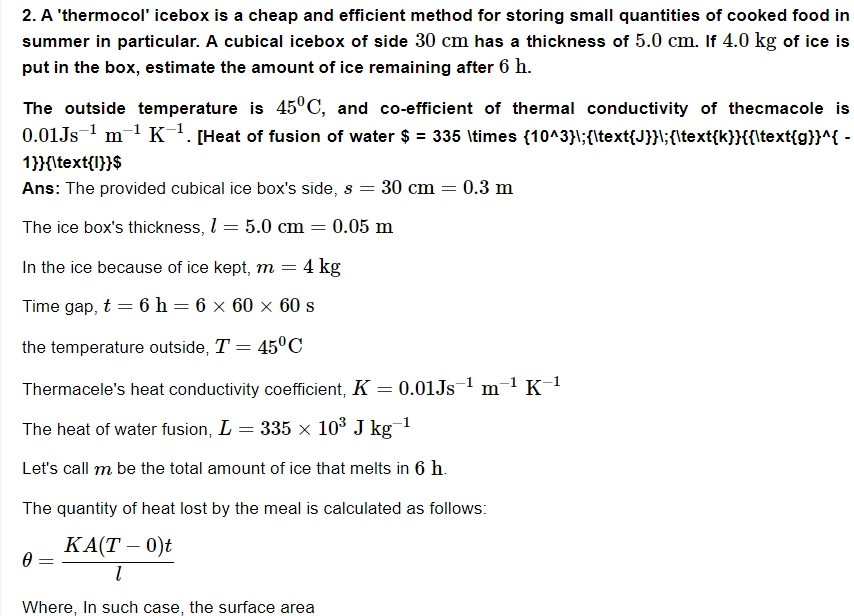
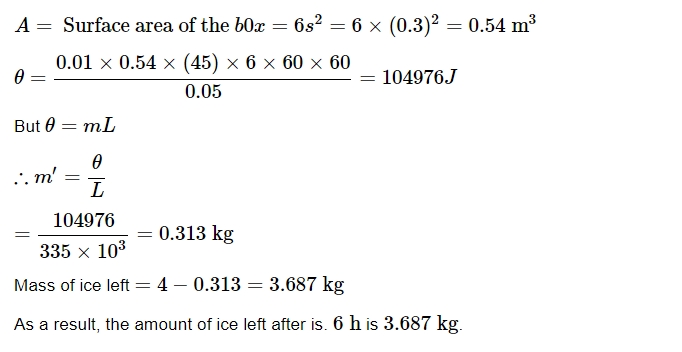
3 Mark Questions
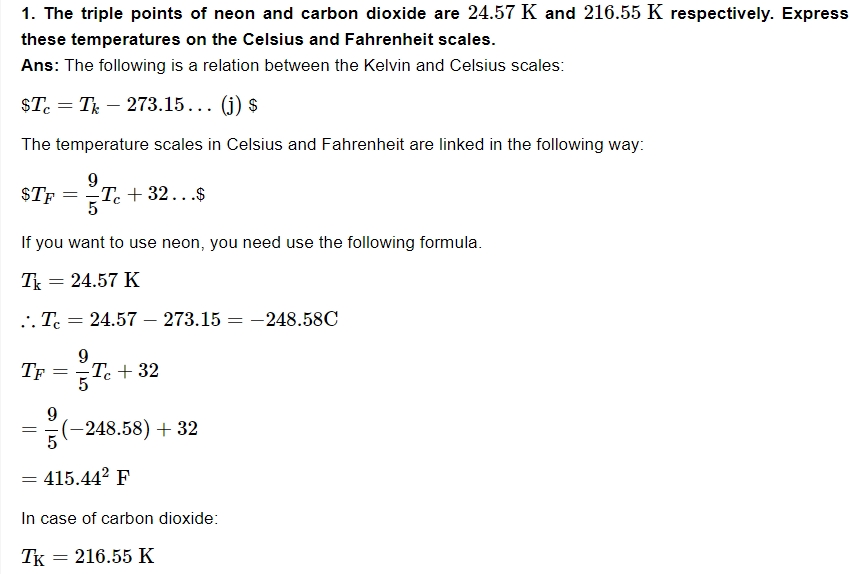

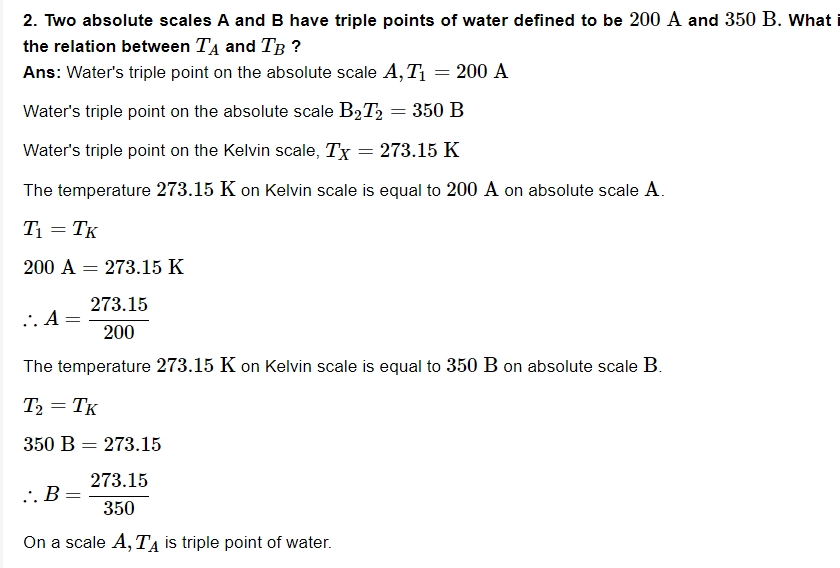
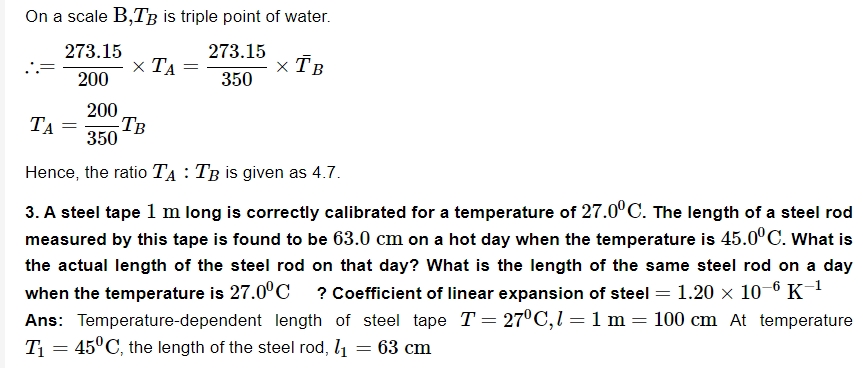
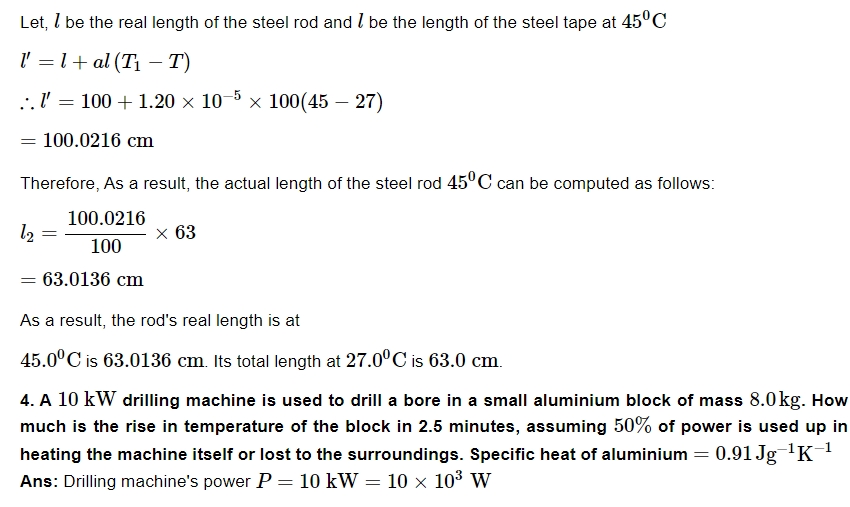
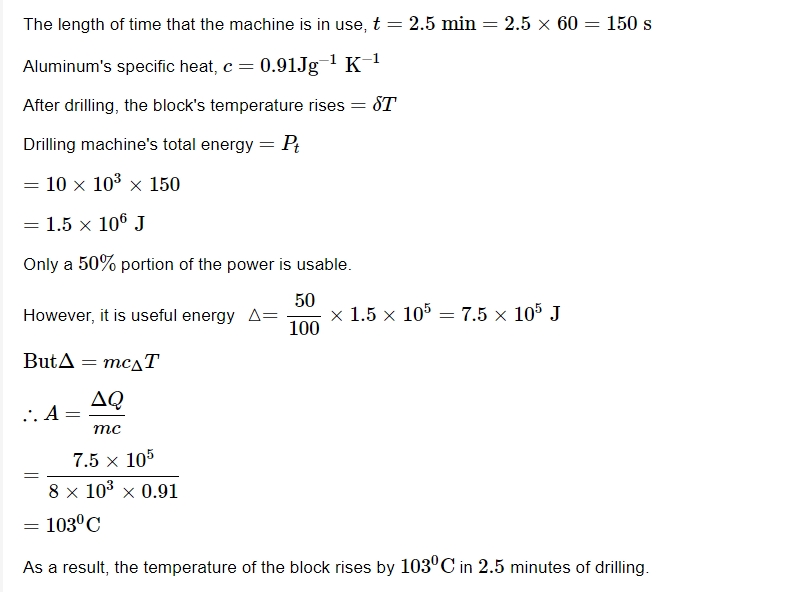
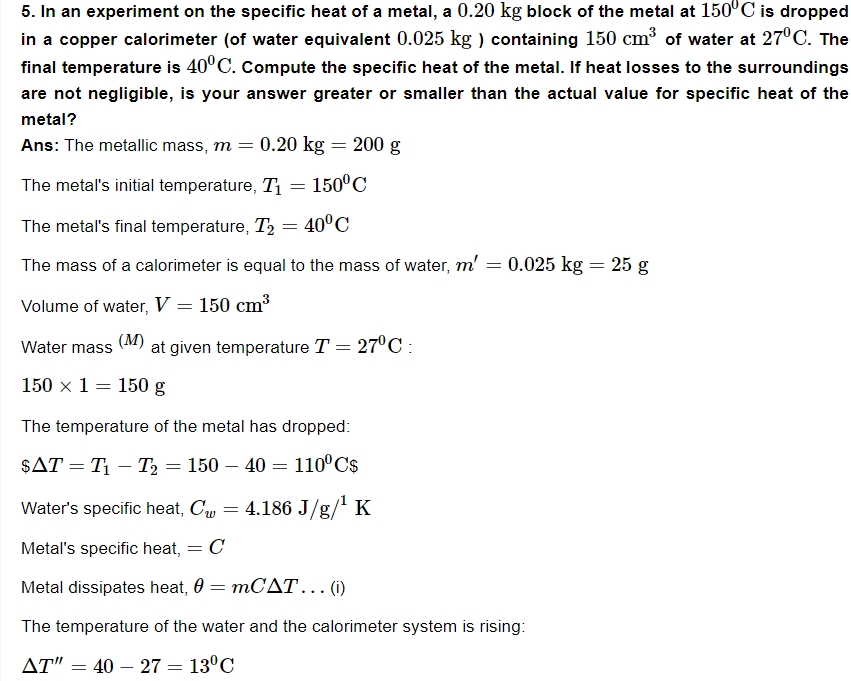
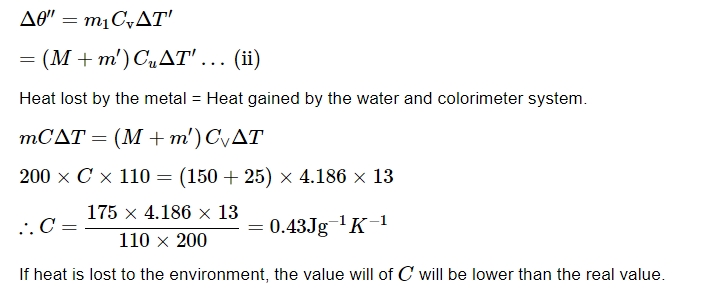
4 Marks Questions
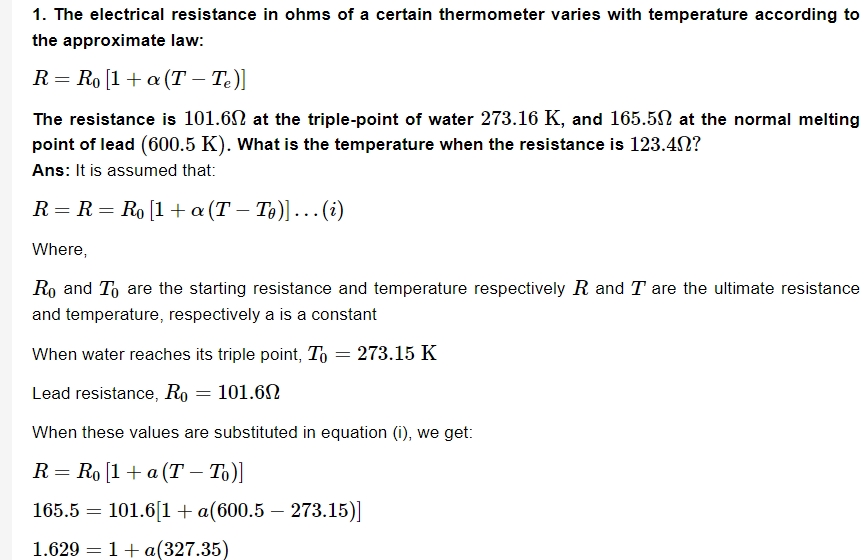
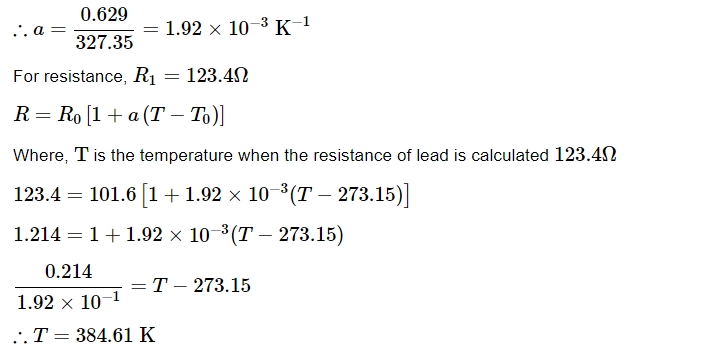
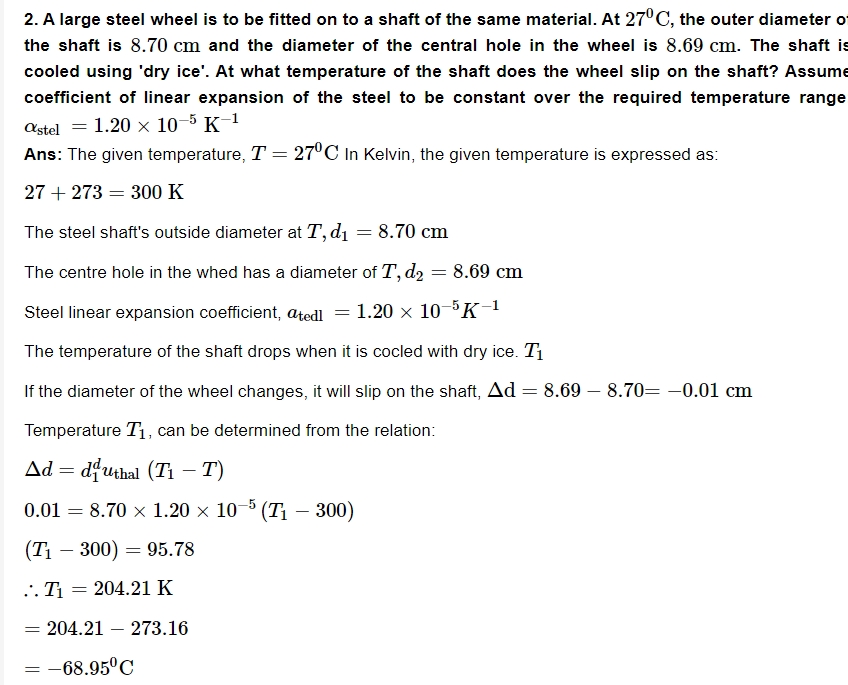
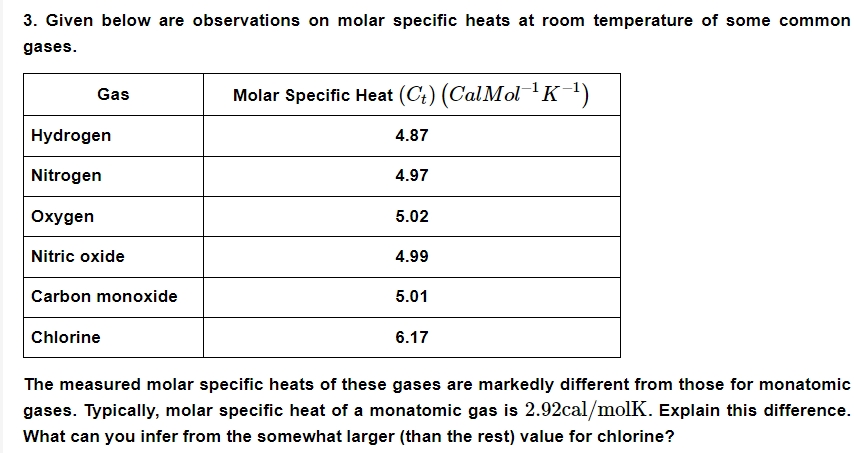 Ans: The gases indicated in the table are diatomic in nature. They have other degrees of freedom (modes of motion) in addition to translational degrees of freedom. Heat must be supplied to raise the temperature of these gases. The average energy of all modes of motion is increased as a result of this. As a result, diatomic gases have a higher molar specific heat than monatomic gases.
Ans: The gases indicated in the table are diatomic in nature. They have other degrees of freedom (modes of motion) in addition to translational degrees of freedom. Heat must be supplied to raise the temperature of these gases. The average energy of all modes of motion is increased as a result of this. As a result, diatomic gases have a higher molar specific heat than monatomic gases.

4.Explain why:
(a) a body with large reflectivity is a poor emitter
(b) a brass tumbler feels much colder than a wooden tray on a chilly day
(c) an optical pyrometer (for measuring high temperatures) calibrated for an ideal black body radiation gives too low a value for the temperature of a red hot iron piece in the open, but gives a correct value for the temperature when the same piece is in the furnace
(d) the earth without its atmosphere would be inhospitably cold
(e) heating systems based on circulation of steam are more efficient in warming a building than those based on circulation of hot water
Ans: (a) A body with a high reflectivity absorbs light radiations poorly. A poor radiation absorber will also be a poor radiation emitter. As a result, a body with a high reflectivity is an inefficient emitter.
(b) Brass is an excellent heat conductor. When a person touches a brass tumbler, heat is easily transferred from the body to the tumbler. As a result, the body's temperature drops to a lower level, and one feels cooler.
Wood is a poor heat conductor. When one touches a wooden tray, just a small amount of heat is transferred from the body to the tray. As a result, there is only a minor reduction in body temperature, and one does not feel cool. On a cool day, a metal tumbler seems colder than a wooden tray.
(c) The temperature of a red hot iron piece maintained in the open is measured incorrectly by an optical pyrometer calibrated for perfect black body radiation. The equation for black-body radiation is:
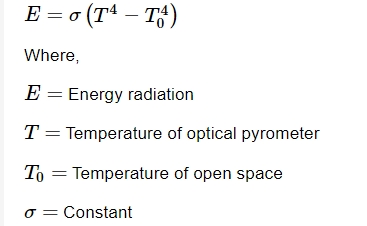
As a result, increasing the temperature of open space lowers the amount of energy radiated. When the same piece of iron is heated in a furnace, the amount of radiation energy produced is the same.
(d) Earth would be inhospitably cold without its atmosphere. There will be no additional heat trapped in the absence of air gases. The heat would be reflected back to the surface of the earth.
(e) A heating system that circulates steam rather than hot water is more efficient in warming a building. This is due to the fact that steam includes latent heat, which is surplus heat.
Benefits of Using Important Questions for Class 11 Physics Chapter 10
Using important questions for Class 11 Physics Chapter 10 Thermal Properties of Matter offers several advantages:Focused Preparation : It helps students focus on the most frequently asked and important topics, ensuring efficient study time.
Better Understanding : By solving these questions, students can deepen their understanding of key concepts like heat transfer, specific heat, and thermodynamic processes.
Enhanced Problem-Solving Skills : Practicing important questions sharpens analytical and problem-solving abilities, crucial for both exams and practical applications.
Exam Readiness : It boosts confidence by familiarizing students with the exam pattern and types of questions likely to appear.
Self-Assessment : Students can evaluate their grasp of the subject and identify areas that need further attention.
Important Questions for Class 11 Physics Chapter 10 FAQs
What is another name for thermal properties of matter?
Can I start thermal properties of matter?
What factors determine the thermal properties?
Does thermal energy affect matter?





